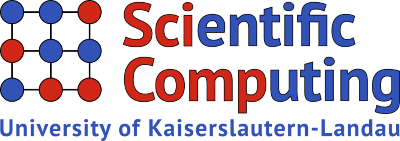Date and Place: Thursdays and hybrid (live in 32-349/online via Zoom). For detailed dates see below!
Content
In the Scientific Computing Seminar we host talks of guests and members of the SciComp team as well as students of mathematics, computer science and engineering. Everybody interested in the topics is welcome.
List of Talks
Event Information:
-
Thu19Feb2015
SC Seminar: Maarten Blommaert
11:30SC Seminar Room 32-349
Maarten Blommaert, Forschungszentrum Jülich/SciComp
Title:
A Practical and in Parts Adjoint Based Gradient Computation Methodology for Efficient Optimal Magnetic Divertor Design in Nuclear Fusion ReactorsAbstract:
The first fusion reactor ITER is currently under construction in Cadarache, France. Meanwhile, fusion power plant conceptual design activities are intensified in Europe, US and Asia. The transition of fusion research from a purely physical science towards computational engineering is regarded as urgent in all ITER partner states.
Design of the particle and power exhaust system, the so-called divertor configuration, is known to be a key issue to evolve from experimental fusion reactors to commercial power plants. This divertor is designed to modify the magnetic field configuration such that strong plasma flows develop towards particular high heat flux wall components of the burning chamber. However, the excessive heat loads to these components can easily exceed material limits. The divertor design process is assisted by computationally extremely demanding plasma edge codes, simulating the complex physics of the plasma edge. In order to reduce design costs, adjoint based optimal design methods have recently been introduced for divertor shape design.
In this presentation, the focus is on the application of a similar methodology that enables adjoint based optimal design of the fusion tokomak’s magnetic configuration. However, sensitivities of the plasma edge grid generation process complicate adjoint based sensitivity calculation. We describe how these difficulties can be overcome by using a combined finite differences/continuous adjoint gradient computation. Moreover, an extensive analytical derivation of the partial derivatives of the plasma edge equations with respect to the magnetic field geometry is entirely avoided by using the finite difference approach through the forward plasma edge solver as well. Optimal design results are shown for realistic test cases on existing experimental fusion reactors.
